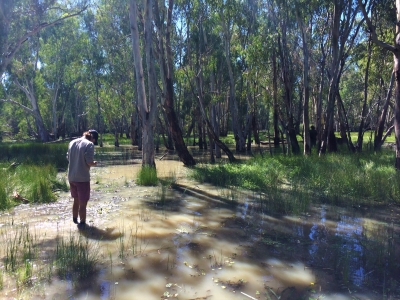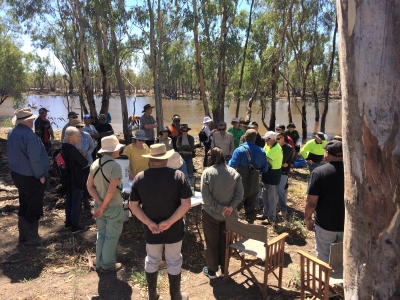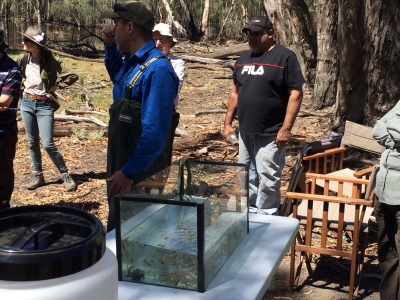Celebrating 50 years of the Ramsar Convention
NRM NEWS - FEBRUARY 2021 - AQUATIC SYSTEMS
By Jamie Hearn
Senior Land Services Officer - Central Murray Ramsar project
P: 03 5881 9925 | M: 0447 420 789 | jamie.hearn@lls.nsw.gov.au

On February 2nd in 1971, in the city of Ramsar in Iran, the Convention on Wetlands of International Importance was signed. It has since become known as the Ramsar Convention. Australia was one of the first countries to become a Contracting Party to the convention. Currently, there are 170 countries signed up with over 2400 wetland sites listed across the world. Wetlands need to meet one of nine specific criteria to be recommended for listing.
The NSW Central Murray Ramsar site was listed in 2003. It is located south and west of Deniliquin and consists of three red gum forest areas. These are the Werai, Millewa, and Koondrook-Perricoota Forests and have a combined total area of about 85,000 ha. This site meets four of the possible nine listing criteria.
To celebrate 50 years of the convention, around 40 people recently gathered at the Pollack Swamp just north of Barham to learn about the value of wetlands in our landscape and discuss the possibility of establishing more sites like the Pollack on both private and public land.
The Pollack forms part of the Koondrook-Perricoota Forest. The event was organised in conjunction with the Western Murray Land Improvement Group and led by local scientists and community members. Those who attended were informed about the correlation between wetland areas and Aboriginal occupation sites and the biodiversity that these sites can maintain.
Wetland areas on farms and forests create refuges and habitat for a range of aquatic species and waterbirds and play an essential role in water quality and carbon management.

Top photo: Looking for water ribbon tubers.
Bottom left photo: Sampling at Pollack Lagoon; Bottom right photo: Small bodied native fish in tank
This project is supported by Murray Local Land Services, through funding from the Australian Government’s National Landcare Program.

